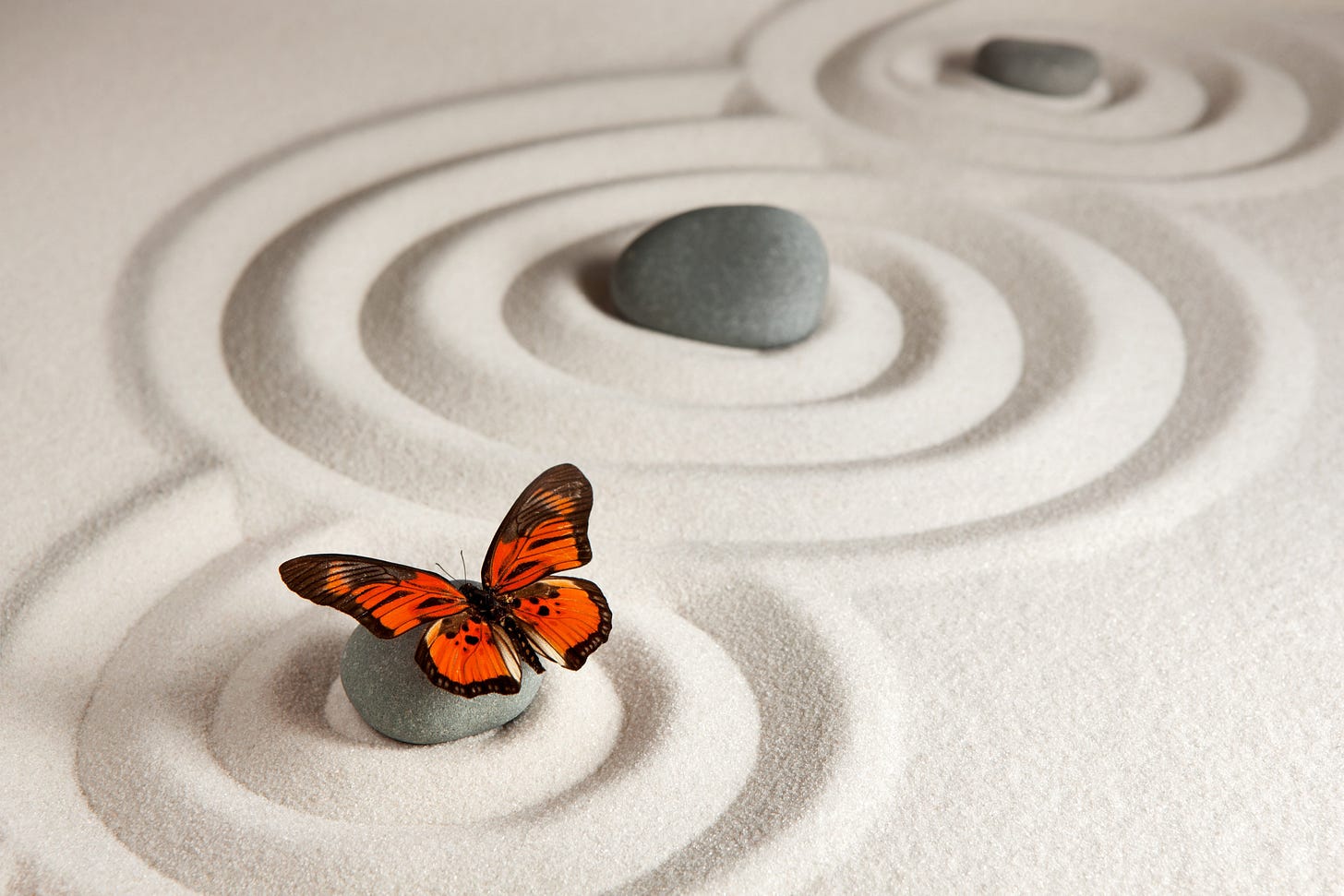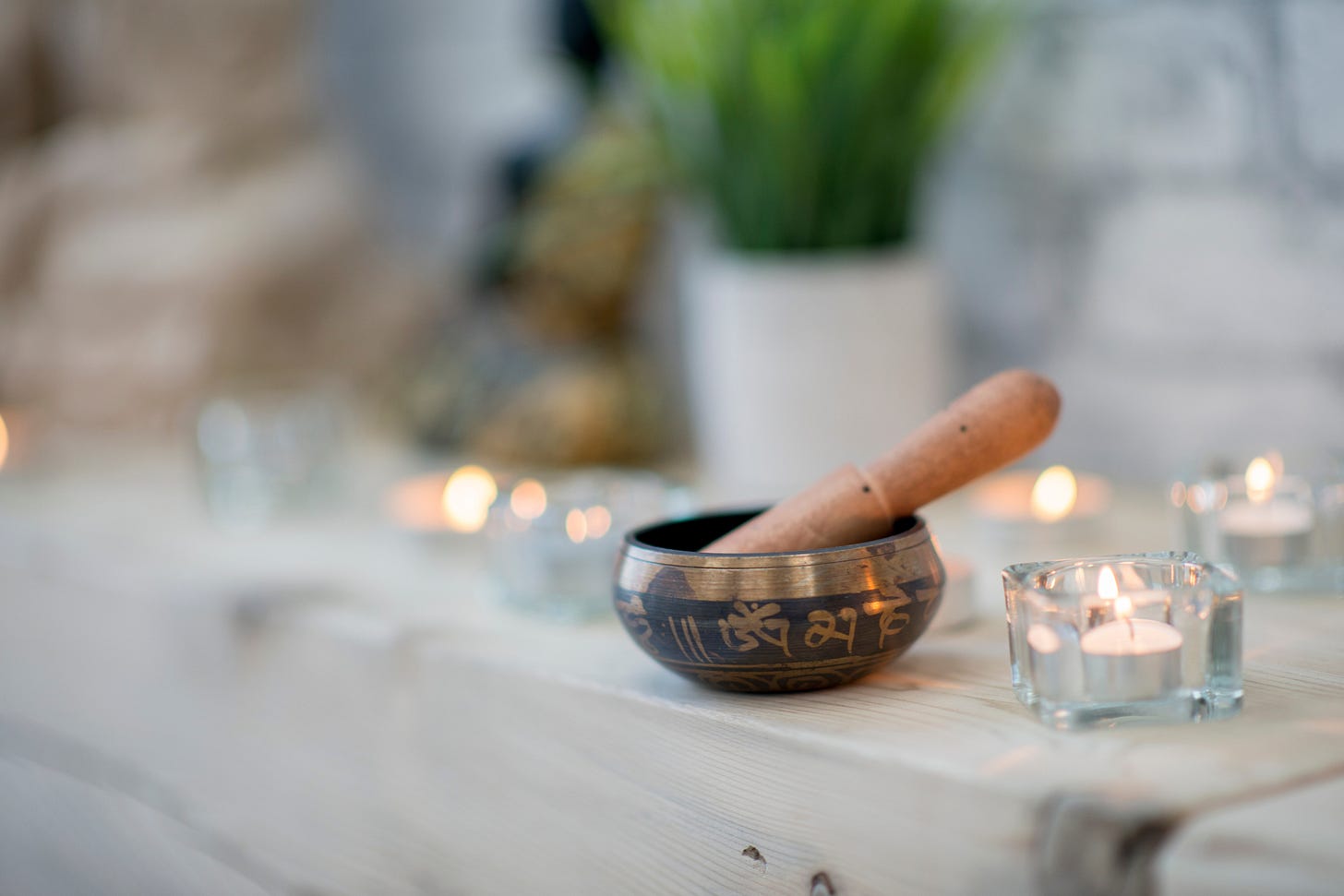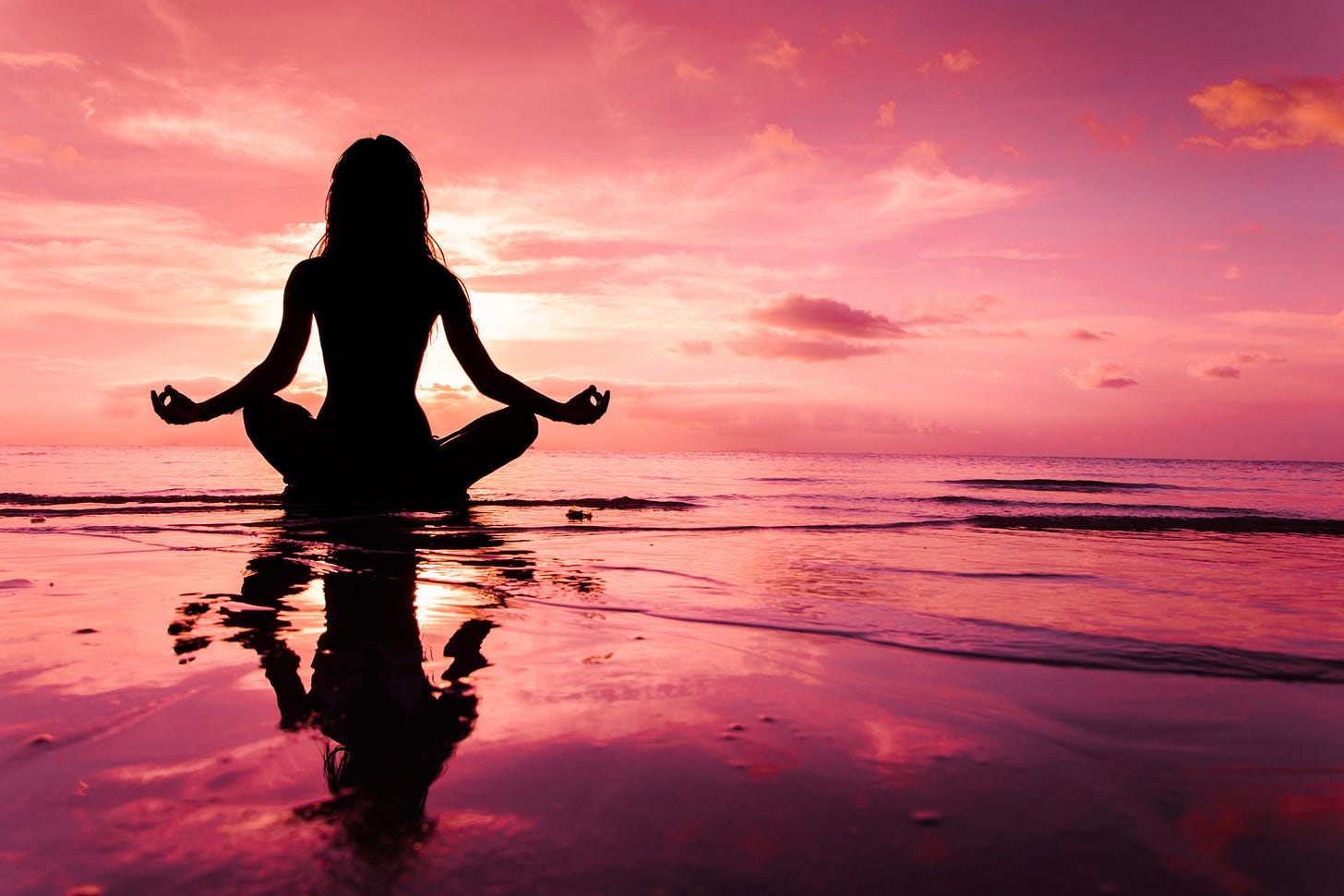A Beginner’s Guide to Meditation and Inner Peace
Meditation is not complicated - all you need is you

Did you know that a few minutes of meditation a day can lower stress hormones up to 30%? That’s huge—especially for anyone juggling work, family, and life’s big transitions.
I want to start by stating loudly that meditation is not some mystical, out-of-reach practice, but rather a simple, accessible tool to bring more peace, clarity, and connection into anyone’s life.
The practice has been around for over 2,500 years. Its roots can be found in Buddhist teachings and other Eastern philosophies, and today, it’s being embraced by people of all backgrounds as a way to find calm and clarity.
According to the American Psychological Association, meditation can reduce stress, improve focus, and even lower symptoms of anxiety and depression. Studies also show that regular meditation can improve physical health by lowering blood pressure and reducing inflammation.
A few minutes a day can lower cortisol, the stress hormone, by up to 30%. That’s a game changer for women over 35, especially when stress levels tend to be higher due to work, family, and life transitions.
Meditation can also literally change the structure of your brain in ways that support learning, memory, and emotional well-being.
So how does meditation connect to spirituality and purpose? When we meditate, we create space to reflect, to listen to our inner voice, and to connect with a Higher Power, something greater than ourselves—however you define that.
(Watch on YouTube!)
Meditation isn’t about stopping your thoughts. It’s about observing them without judgment. And as we do that, we start to understand ourselves better. We start to see patterns, beliefs, and emotions that might have been controlling us unconsciously.
When I started meditating, me and my mind were a mess. I would fidget, get angry, and was known to shed a tear or two—okay, many tears. I basically fought with my mind every morning because I was trying to achieve some type of enlightened perfection, which is impossible.
Perfectionism is a disease.
I ended up starting my meditation practice doing chants and reading what are called sadhanas - something Tibetan Buddhists do. Basically, I was chanting. I focused on them because I wasn’t able to settle my mind enough to concentrate on anything, even my breath.
It took me years to understand that you don’t lose your thoughts, and there’s nothing to achieve. That awkward fidgety feeling I had was me starting to get in touch with my body and mind.
When most people start a practice, they think their thoughts are getting louder, crazier, and that there are more of them. Actually, what’s happening is you’re starting to hear what’s already inside you. It’s called monkey mind.
We all have it at first. So relax if you feel like there’s a chorus of people screaming and complaining in your head. When you can, make friends with all those thoughts racing around and let them gently float by.
If you’re counting your breath, when your mind wanders and you notice it, simply start over at one. And don’t stress. There’s nowhere to go, nothing to achieve. Just breathe.
The last thing you want to do is to get stressed over not trying to stress, so simply relax.
I also learned that meditating is like washing a dirty shirt. When you put the shirt in the water, the dirt comes out and the water becomes dirty. Eventually, the dirt will settle and the shirt will be clean. Your mind is like that.

So, how do we get started? Here a few simple steps to begin your meditation practice:
Create a space
Find a quiet, comfortable spot where you won’t be interrupted. It doesn’t need to be fancy—a cushion, a chair, even your bed will do. Though it’s best to sit upright because it’s easy to fall asleep if you’re on your back.
Start small
You don’t need to meditate for an hour. Start with just five minutes—or two minutes! Close your eyes, take a few deep breaths, and focus on your inhale and exhale. Add a minute or two each day or week.
Use a guide
If you’re new to meditation, guided meditations can be incredibly helpful. Apps like Calm or Insight Timer have beginner-friendly options. Many people find Sharon Salzberg’s guidance useful. Check out her ten-day loving kindness meditation challenge.
Learn what works for you
You don’t have to meditate on a cushion. Actually, anything you do that you concentrate and focus intently on is meditation.
When you wash the dishes, focus on the warm water, the suds, and the feel of the glasses. Put all your attention on what you’re doing. When you go for a walk, focus on your feet touching the ground, the feel of the sun and air - give it 100% of your attention, or as much as you can.
It’s the same with taking a shower—focus on taking a shower and nothing else. That’s all meditation.
Your mind will wander, especially when you start. The key is not to beat yourself up and to just go back to concentrating on whatever your focus was. That is literally all there is to it.
Many people make meditation seem more complicated than it is. Just breathe and focus on your breath - or focus on what works for you. You don’t need fancy clothes or teachers or cushions. You don’t have to get into any particular position.
Having a straight spine is important, whether sitting or laying down, but don’t even worry about that until you can comfortable with the practice.
Just breathe, or focus on something.

You don’t even need a class, though you might enjoy meditating in a room full of people—it’s a very powerful experience.
When you find your mind racing all over the place, celebrate. You’re beginning to hear what’s been inside you already.
If your mind simply won’t stop, and even after trying, you find it too distracting, end your session for the day. Come back that evening, or the next morning. There’s no need to stress about it.
I mean, would you run a marathon before you could walk out the door? Meditation is the same - coming back again and again with no expectation is key.
In time, your mind will calm down—as will your whole body and being.
Spirituality and meditation are personal journeys, and there’s no right or wrong way to explore them. Meditation is just one path—and it’s a powerful one.
Enjoy your journey—and live with joy.
Diane Hatz is an author, organizer, and inner activist. Join her email list to get personal newsletters and more. You can find info on her books and writing on her website and through her email list.



